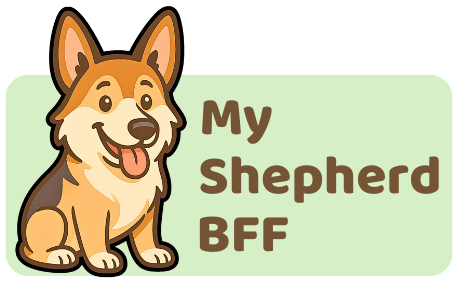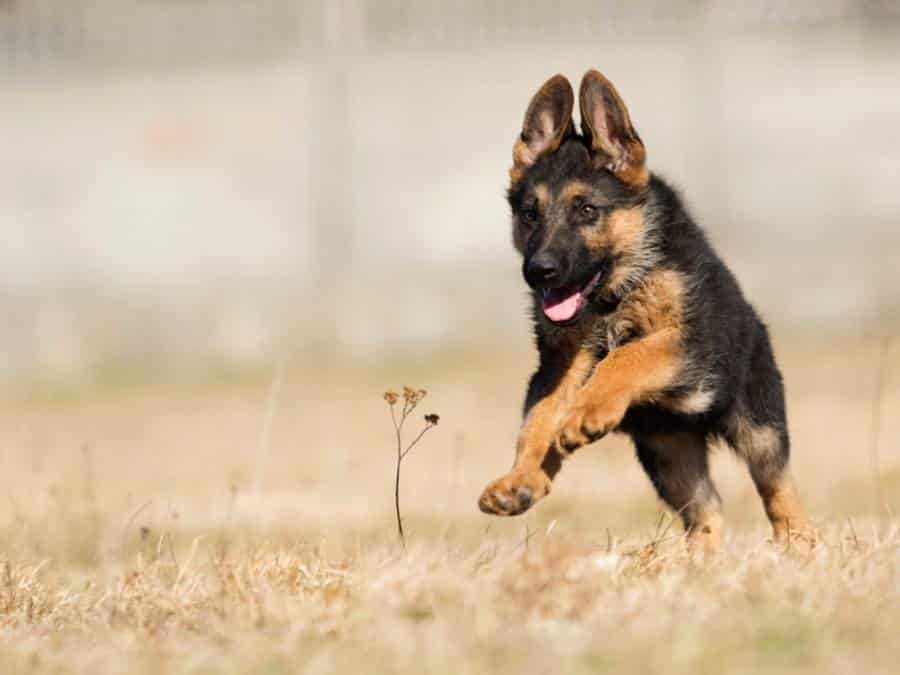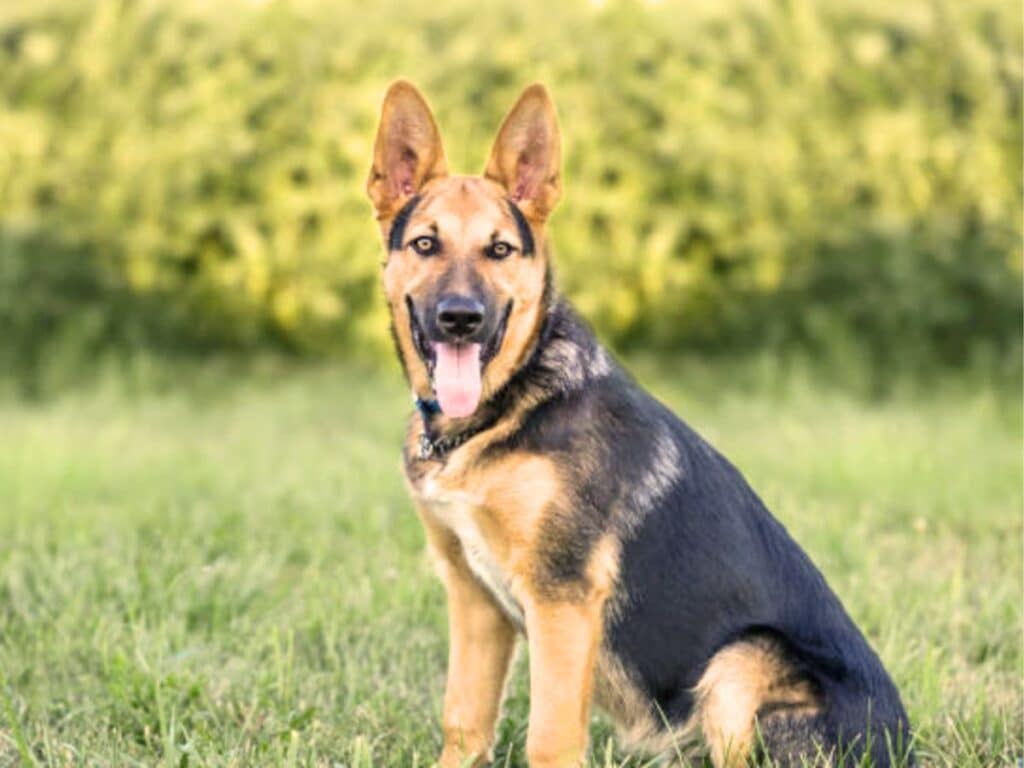At 13 weeks old, your German Shepherd is officially in the toddler phase of puppyhood—full of curiosity, growing confidence, and an endless desire to explore everything (and chew on it too!). This is the age where your pup starts to come into their own.
This guide is here to walk you through what to expect, what’s normal, and how to thrive during this sometimes-chaotic but truly special time.
I’ve got practical tips, personal insights, and useful resources to help you navigate life with your 13-week-old GSD like a pro.
13 Week Old GSD Puppy – Overview
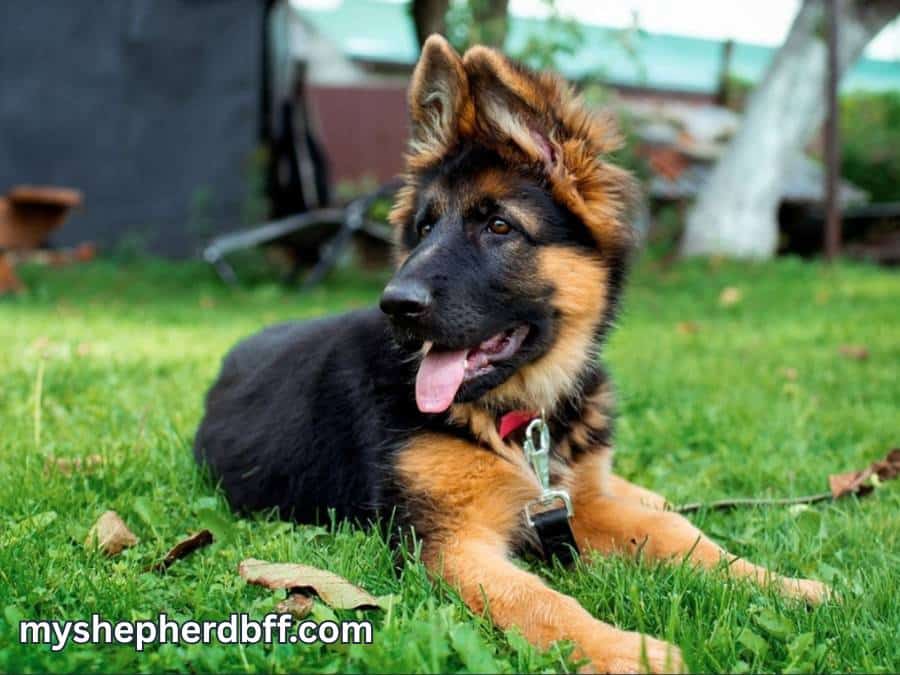
The following table provides a comprehensive overview of the physical traits, behavior patterns, and general care needs during this crucial growth stage of a 13-week-old German Shepherd.
| Size | around 10-12 inches (25-30 cm) |
| Weight | Around 20–26 lbs (9–12 kg) depending on gender and genetics. |
| Coat | Soft and fluffy puppy coat; may start to feel slightly coarser as adult coat develops. |
| Eyes/Ears | Eyes are fully open and alert; ears may begin standing up or remain floppy—both are normal at this stage. |
| Teething | In full swing; expect lots of chewing. Teething toys are essential. |
| Energy Level | High! Needs multiple play sessions and short walks throughout the day. |
| Socialization | Critical stage for exposure to people, pets, and environments; aim for positive experiences. |
| Playfulness | Extremely playful and curious. Loves games, exploring, and engaging with their people. |
| Training | Learning basic commands like “sit,” “come,” and “no”; short, consistent sessions work best. |
| Sleep Patterns | Needs around 18–20 hours of sleep daily, including naps. |
| Feeding | Usually eating 3 meals/day of high-quality large-breed puppy food. |
| Bathroom Habits | Still learning; may have occasional accidents. Needs frequent, scheduled potty breaks. |
| Social Bonding | Forming strong attachment to family. Prefers company, may whine when left alone. |
| Vocalization | May start barking, whining, or “talking” to get attention or express needs. |
| Health Care | Due for third round of vaccinations. Vet check-ups and parasite prevention are important. |
Physical Development at 13 Weeks
Your 13-week-old German Shepherd is growing at lightning speed—and it shows!
Average Weight and Size
At 13 weeks old, many German Shepherd puppies weigh between 20 to 26 pounds (9–12 kg), with males typically on the higher end of the scale.
Height-wise, they may be around 10–12 inches at the shoulder. But here’s the thing: every puppy grows at their own pace.
Genetics, diet, and even the size of the parents play a huge role in development. So if your pup is a bit bigger or smaller, it’s usually no cause for concern—as long as they’re healthy, active, and your vet is happy with their progress.
If you’d like a deeper look into how your GSD should be growing, check out my article German Shepherd Growth Chart By Month. It’s a helpful guide that covers everything from weight and height milestones to other key markers
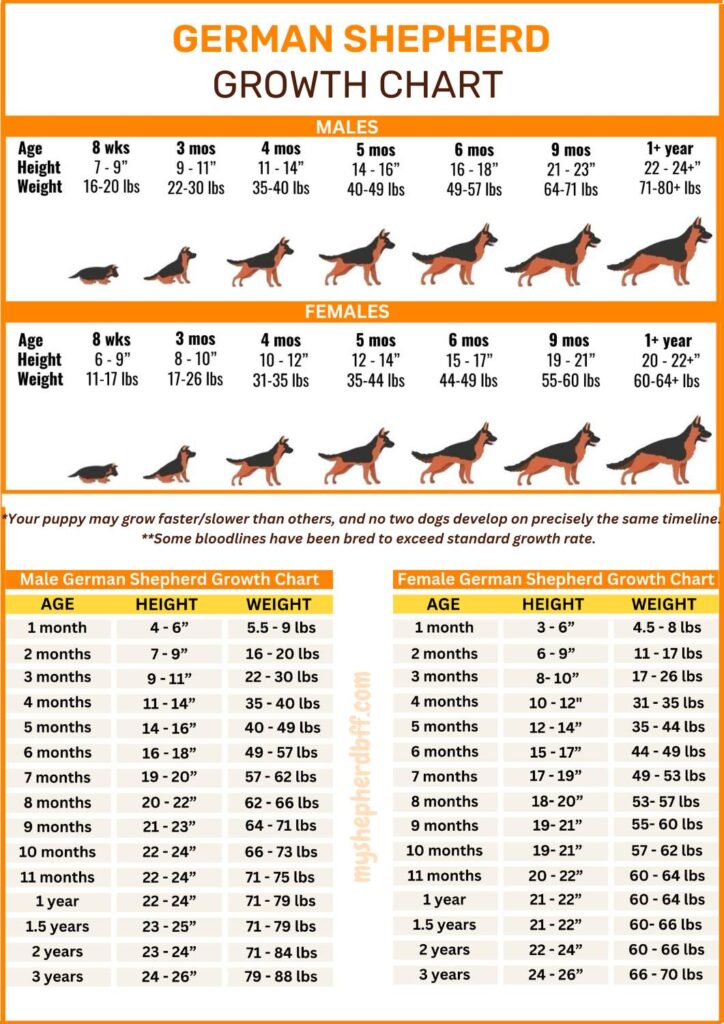
Feeding Schedule & Nutrition
Feeding your 13-week-old German Shepherd the right way is one of the most important things you can do to support their rapid growth and development.
How Often Should You Feed a 13-Week-Old GSD?
At this age, your puppy should be eating 3 well-spaced meals a day. Think of it like breakfast, lunch, and dinner for dogs. This helps:
- Keep their blood sugar stable
- Avoid overloading their still-developing digestive system
- Prevent excessive hunger (which can lead to begging, barking, or stealing)
If your schedule is hectic, consider setting meal reminders or pre-portioning meals at the start of the day to make things easier.
How Much to Feed a 13 Week Old German Shepherd
At 13 weeks old, a German Shepherd puppy should be eating three meals per day, and the amount depends on their weight, activity level, and the specific dog food you’re using.
General Guidelines:
Here’s a rough daily feeding guideline based on dry puppy kibble formulated for large breeds:
| Puppy Weight | Daily Amount (Divided into 3 Meals) |
| 20–22 lbs (9–10 kg) | 2 to 2.5 cups per day |
| 23–26 lbs (10.5–12 kg) | 2.5 to 3 cups per day |
Note: Always check the feeding chart on your dog food bag—brands differ in calorie content per cup. These are general ballpark figures.
For more insights, you can refer to my article How much to feed my German Shepherd puppy.
In this guide, I’ll break it all down for you—how much to feed your German Shepherd based on age, what to look for in a high-quality puppy food, and how to adjust portions as your pup grows. Plus, I’ve included an easy-to-follow feeding chart to take the guesswork out of mealtime.
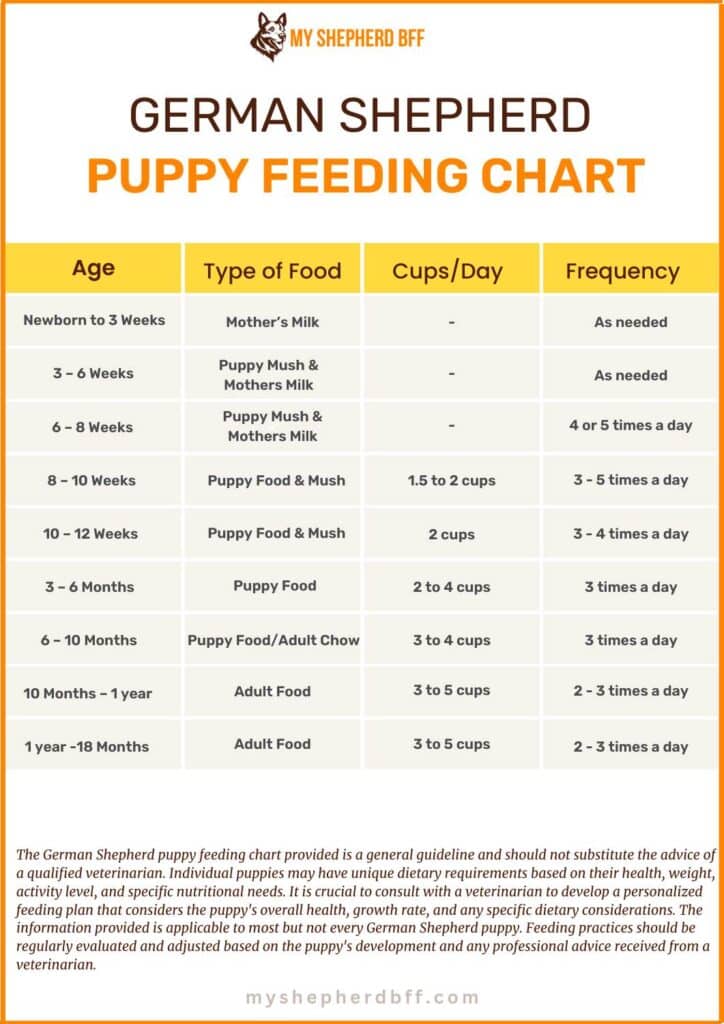
Choose a High-Quality Puppy Food
Not all dog foods are created equal—especially when it comes to large breeds like German Shepherds. Look for a puppy formula specifically designed for large-breed dogs, which helps support joint health and proper growth.
The first ingredient should always be real meat, not by-products or fillers. Bonus points if it includes DHA for brain development and glucosamine for growing joints.
Avoid switching foods frequently at this age unless absolutely necessary—it can upset their tummy and slow down progress.
✅ Need help choosing?
I’ve put together a list of tried-and-tested products in my GSD Feeding Essentials Amazon List.
It includes high-quality puppy kibble, slow feeders, supplements, and even stainless steel bowls designed for fast eaters.
Keeping Your Puppy Sufficiently Hydrated
Fresh, clean water should always be available to your puppy, especially after playtime and meals. Hydration is essential for digestion, temperature regulation, and energy.
Watch for signs of underfeeding:
- Rib bones starting to show
- Lethargy or low energy
- Constant begging or scavenging
Watch for signs of overfeeding:
- Rapid weight gain or bloating
- Loose stools
- Lack of interest in meals
Finding the right balance takes a little observation—but don’t hesitate to check with your vet if you’re unsure. Every pup is different!
RELATED: How Much Water Do German Shepherds Drink in a Day?
Behavior Milestones at 13 Weeks
At 13 weeks, your German Shepherd is officially entering the “curious toddler” phase—full of energy, sass, and an eagerness to test the limits.
1.They’re Starting to Understand Basic Commands
By now, your pup may already respond to simple cues like “sit,” “come,” or “no.” If not, don’t worry—this is the perfect time to start.
German Shepherds are incredibly intelligent and eager to learn, so keep training sessions short (5–10 minutes), positive, and reward-based.
Pro tip: Use high-value treats and a cheerful tone. Your enthusiasm is contagious!

2. Everything Still Goes in the Mouth
Your GSD is still exploring the world with their mouth—and not just toys. Sticks, socks, your hands… everything is fair game to them.
This is normal behavior at this age but can get out of hand if not guided.
Here’s what helps:
- Keep chew-safe toys readily available in every room.
- Supervise during play and gently redirect mouthing to a toy.
- Avoid rough play that encourages biting your hands or arms.
3. Testing Boundaries: Biting, Jumping & Barking for Attention
This is when your adorable puppy starts acting a little… rebellious. You might notice:
- Nipping when excited
- Jumping up to greet people
- Barking when ignored
This isn’t “bad behavior”—it’s a normal part of development. Your pup is trying to understand what gets your attention and what doesn’t.
Stay calm and consistent:
- Don’t yell or physically correct; this can backfire with sensitive breeds like GSDs.
- Ignore attention-seeking barking and reward quiet, calm behavior.
- Teach an alternative to jumping, like “sit” for greetings.
- For biting, a simple “ouch!” followed by redirecting to a toy works wonders.
4. Teething Troubles
At 13 weeks, teething is in full swing. Your pup’s baby teeth are making way for adult ones, and that can mean a lot of gnawing on everything—shoes, furniture, hands, you name it.
Here’s how you can help soothe the discomfort:
- Offer frozen carrot sticks or wet washcloths for gentle chewing relief.
- Provide a variety of chew toys with different textures (rubber, nylon, rope).
- Avoid scolding for biting—instead, redirect to an appropriate toy.
- If your pup’s chewing feels frantic or they’re drooling more than usual, it’s likely those teeth are really shifting!
Teething can be uncomfortable, but it’s also a critical phase in your pup’s development. Teaching them what is and isn’t okay to chew now will pay off later.
5. Energy Bursts and Puppy Clumsiness
If your pup seems to bounce off the walls one minute and snooze like a log the next, you’re not imagining things. GSDs at this age are famous for their zoomies—those spontaneous, joyful sprints around the house or yard.
Their coordination is still catching up with their enthusiasm, so don’t be surprised if your pup slides across the floor chasing a ball or does an awkward tumble during playtime. It’s all part of their growth.
RELATED: German Shepherd Behavior Stages By Age

Training Tips for a 13-Week-Old GSD
At this age, your pup is eager to learn and form habits—both good and not-so-good—so the work you put in now will pay off in a big way down the road.
1. Keep Sessions Short, Fun, and Rewarding
German Shepherds are super smart, but they’re still babies at 13 weeks. Their attention span is short—so aim for 5–10 minute training sessions, a few times a day.
Make it a game, not a chore. Use high-value treats, toys, or even praise to reward the behavior you want to see.
If you notice your pup getting distracted or frustrated, take a break. Ending on a positive note keeps them excited for the next round.
2. Start with Basic Obedience
Your focus right now should be on laying a solid foundation with essential commands:
- Sit
- Down
- Come
- Name recognition (responding when called)
Use a cheerful tone, reward immediately, and repeat often. Repetition and timing are key—your pup won’t get it overnight, but they’ll get there faster if you’re consistent.
3. Socialization is Just as Important as Obedience
At 13 weeks, your GSD is going through a critical socialization window. This is the time to safely expose them to:
- New people (young, old, men, women)
- Different environments (parks, vet offices, car rides)
- Sounds (vacuum cleaners, doorbells, traffic)
Make every new experience positive. Bring treats on walks and reward calm behavior when your pup encounters something new. Proper socialization now prevents fear-based behavior later on—and builds a confident, well-adjusted adult dog.
RELATED: How To Socialize Your German Shepherd
4. Crate Training & Housebreaking Progress
If you’ve started crate training your GSD pup, you may notice your pup beginning to settle more quickly in their crate now.
That’s a great sign. Crates provide a safe space and help immensely with housebreaking, too.
Tips for success:
- Stick to a regular potty schedule.
- Take your pup out first thing in the morning, after meals, naps, and play.
- Celebrate outdoor potty successes like it’s a party!
- Keep accidents low-key—clean thoroughly and move on.
If your GSD is still having occasional slip-ups, don’t stress. They’re still learning.
✅ Want to Make Training More Fun for Both of You?
If you’re looking for a smarter, more engaging way to train your German Shepherd, I highly recommend checking out the Brain Training for Dogs course.
It’s packed with games and step-by-step lessons designed specifically to boost your dog’s focus, obedience, and mental stimulation.
This isn’t just any online course—it’s a science-backed approach to raising a calm, well-behaved dog who listens because they want to.
Plus, you’ll find many of the tools used in the course (like clickers, treat pouches, and puzzle toys) in my Training Gear Amazon List—all handpicked for German Shepherd owners like you.

Common Concerns at 13 Weeks
As your German Shepherd pup hits 13 weeks, you’ll probably find yourself dealing with a few “speed bumps” along the way. Don’t worry—these hiccups are normal and completely manageable with a little patience and a plan.
1.Whining or Crying When Left Alone (Early Separation Anxiety)
At this age, many puppies start to form strong bonds with their humans—which is adorable, but it can also lead to whining, crying, or barking when they’re left alone, even for a short while.
This isn’t “bad behavior”—it’s your pup expressing discomfort with being apart. But now’s the time to gently build their confidence and independence.
Tips:
- Start with short alone times and gradually increase the duration.
- Use the crate as a cozy, positive space (not punishment).
- Leave behind a safe chew toy or treat puzzle to keep them occupied.
- Avoid dramatic greetings and goodbyes—keep it calm and casual.
The goal is to teach them that being alone is safe, not scary.
2. Potty Training Accidents Still Happen
Even if your GSD has been doing well with housebreaking, accidents can still happen—especially if they’re overexcited, distracted, or you missed their signals.
Stay consistent:
- Stick to a regular potty schedule (every few hours, after meals, naps, and play).
- Use the same spot for potty breaks to reinforce the habit.
- Praise and reward immediately after they go outside.
- If there’s an accident, clean up with an enzyme cleaner and move on—no scolding.
Remember, they’re still learning. Patience goes a long way.
3. Vaccination Schedule and Vet Check-ins
Around 13 weeks, your pup should be getting their third round of core vaccinations (DHPP, possibly rabies depending on local laws). This is also a good time to:
- Schedule a general check-up
- Ask your vet about parasite prevention
- Discuss spaying/neutering plans (which typically happen closer to 6 months)
Vaccination appointments are also a great opportunity to help your pup get used to being handled by others—important for future vet visits and grooming sessions.
Final Thoughts
Life with a 13-week-old German Shepherd is a wild ride—equal parts joy, mess, and learning curve. Some days will feel like a win when your pup nails a new command or sleeps through the night. Other days? You might be cleaning up your third potty accident before 9 a.m. or wondering if your shoes will ever be safe again.
But here’s the truth: this phase doesn’t last forever.
Your puppy is growing and changing faster than you realize. Every silly zoomie, clumsy tumble, or curious nose-in-everything moment is part of their journey—and yours too. These are the days that shape the bond you’ll have for a lifetime.
FAQs
1. How much exercise does my 13-week-old German Shepherd need?
While they have a ton of energy, GSD puppies shouldn’t be over-exercised. Aim for 5 minutes of structured activity per month of age, twice a day—so around 15 minutes at a time is ideal. Short walks, gentle play, and mental stimulation (like training games) work best.
2. Is it normal for my 13-week-old GSD to still have potty accidents?
Yes, totally normal! At 13 weeks, your puppy is still learning bladder control and adjusting to house training. Accidents may happen, especially if they get distracted or overexcited. Stick to a consistent potty schedule, supervise closely, and always praise outdoor success. Patience is key.
3. How long should my 13-week-old GSD sleep each day?
A 13-week-old German Shepherd should sleep 18–20 hours a day, including naps. Sleep is essential for healthy growth and development. Don’t worry if your pup seems to snooze a lot between bursts of energy—it’s completely normal!
4. When can I take my puppy outside for walks and socialization?
You can start short outdoor walks and safe socialization as long as your pup has received their second round of vaccinations (usually by 12 weeks). Avoid places with heavy dog traffic (like dog parks) until your vet clears them after the full vaccination schedule.
